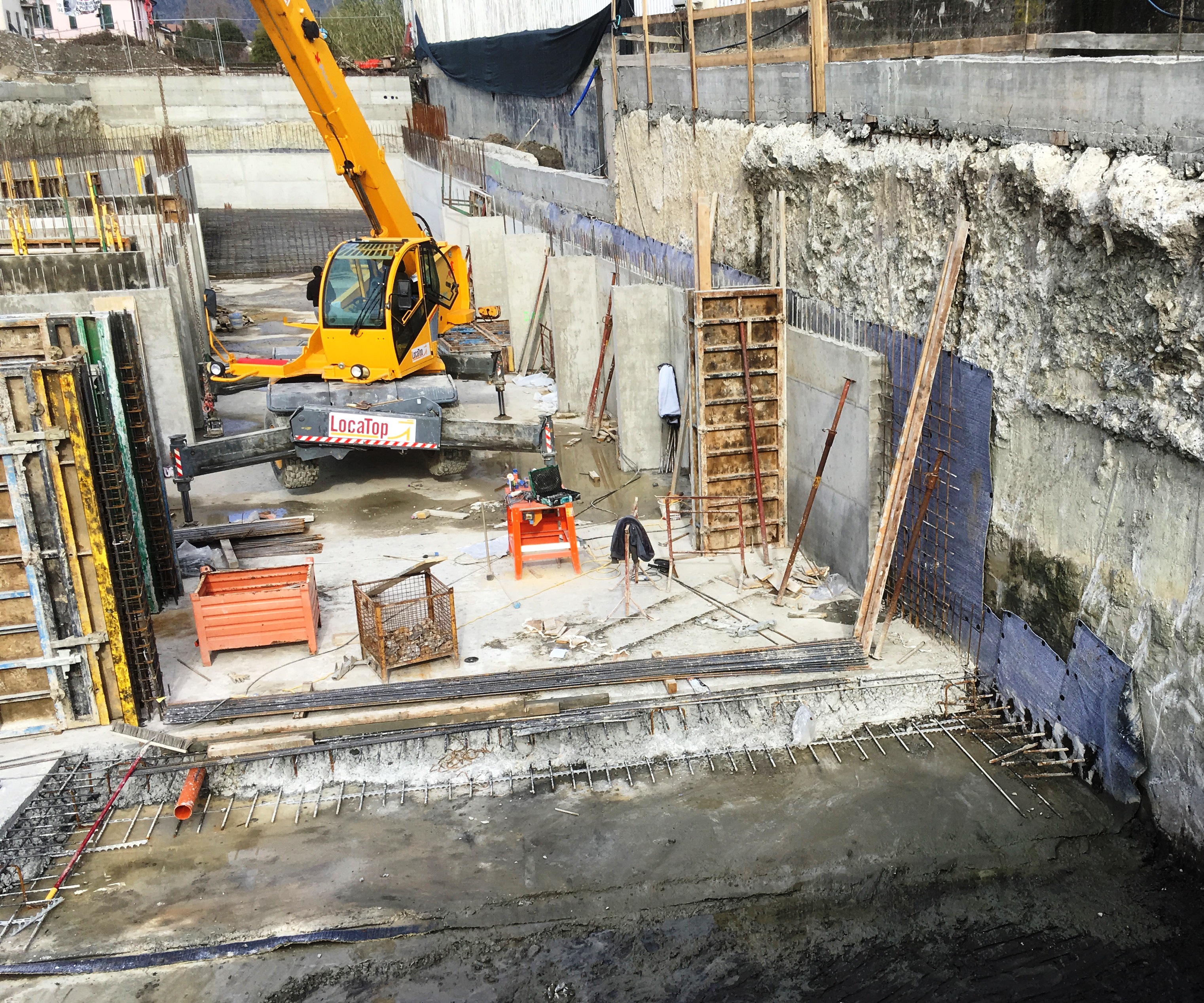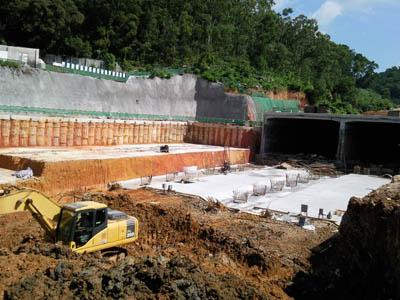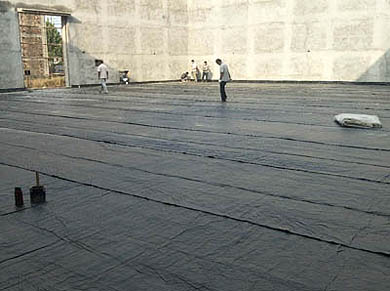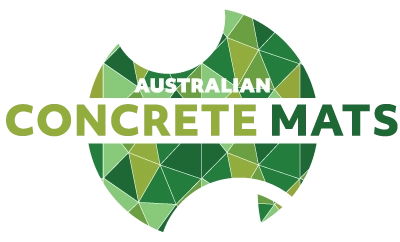CONCRETE WATERPROOFING

Underslab waterproofing with Infraclay Geosynthetic Clay Liner
Geosynthetic Clay Liners are one of the best waterproofing membranes available. However, a study by Deakin University found that nearly 70 per cent of defects in recently constructed apartment buildings relate to water penetration or moisture due to the use of substandard waterproofing materials during construction. Water seeping through concrete causes damp smells, discolouration and bubbling paint and plaster. Most importantly, rising damp also leads to severe structural damage from walls cracking and bricks and blocks crumbling. Apartment buyers need to confirm that these shortcuts do not occur in properties they purchase.
To ensure buildings stay dry, Geosynthetic Clay Liners (GCLs) are widely used to waterproof basements and horizontal foundation surfaces. Because bentonite clay liners have low permeability, high internal shear strength and are easy to install they are ideal for waterproofing under slabs, behind concrete walls and underground tunnels. When used in construction, natural sodium bentonite’s swelling action self-seals small concrete cracks caused by ground settlement, concrete shrinkage or seismic action.
Infraclay Geosynthetic Clay Liners can be installed in virtually any weather and onto uncured concrete. This makes them an ideal choice for concrete waterproofing, such as under slabs, basements, property line applications and grain storage. During installation, a strong mechanical bond forms when wet concrete solidifies around the fabric fibres.

Waterproofing a road tunnel with Infraclay geosynthetic clay liner
BENEFITS
Easy to install
- External corner laps and angle fillets, common with ‘peel and stick’ systems, are unnecessary.
- Primers, adhesives, tapes or protection boards are not required. Application rates of up to 700m2 for two installers in one day.
- The superior ‘peel-adhesion’ bond (fibre encapsulation by the wet concrete) between the GCL and the concrete, ensures that the waterproofing membrane remains in place after the formwork is removed.
- The bentonite waterproof membrane is installed directly over a properly prepared substrate without the need for a concrete mud slab.
- Can be applied no matter what the weather has to offer – rain, sleet, snow and any extremes of temperature.
Money saving
- Geosynthetic Clay Liners offer significant cost savings when used to waterproof steel sheet piling, auger cast retention systems and slurry walls.
- The self sealing ability of bentonite around fixing penetrations, allows application to surfaces which are expensive to waterproof with adhesives.
Durable
- GCLs are extremely flexible and very strong.
- Bentonite clay’s swelling action self-seals small concrete cracks caused by ground settlement, concrete shrinkage or seismic action.
- Natural bentonite clay does not oxidise over time and offers lifetime protection.
APPLICATIONS
Geosynthetic Clay Liners can be installed under all reinforced concrete slabs, ground-bearing or suspended, thicker than 150mm. They are used extensively for concrete waterproofing in a wide range of commercial and civil applications, including:
- Basement waterproofing
- Wall tanking
- Lift pits – the waterproofing membrane of choice to keep sub-basement lift pits dry
- Grain storage facilities
- Roof decks
- Podium decks
- Tunnels
- Waterproofing utility services
Infraclay Multi System Liner

Underslab waterproofing with Infraclay GCL
Geosynthetics Australia’s multi system waterproof liner offers added protection in saline or contaminated water or where gasses such as methane are present. This fibre reinforced GCL has a 200 micron HDPE liner bonded to the outside surface of the thick nonwoven geotextile. The HDPE liner provides extremely low permeability for water vapour and gas transmission.












